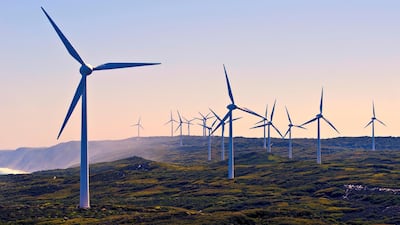Oman is drawing up plans to expand its renewable energy sector, setting a target of generating 11 per cent of its electricity from clean energy sources by 2023, the Oman News Agency reported on Wednesday.
The country, which signed the Paris climate agreement in 2016, also aims to add 30 per cent of clean energy into its power mix by 2030.
The ministry is "devising various plans and policies to boost renewable energy production in the country", the report said.
“Projects of renewable energy contribute to economic diversification plans espoused by the Sultanate at a time the country strives to regulate sources of energy, conserve the environment and limit harmful fossil fuel emissions,” it added.
A number of solar and wind projects are currently being developed in the southern region of Dhofar by state-owned Petroleum Development Oman and Rural Areas Electricity Company (Tanweer), according to ONA.
Some of the biggest renewable energy projects in Oman include the $125 million 50-megawatt Dhofar wind farm, which was developed by Abu Dhabi's clean energy company Masdar and funded by the Abu Dhabi Fund for Development.
Operational since 2019, the wind farm generates enough electricity to power about 16,000 homes and displaces 110,000 tonnes of carbon dioxide emissions per year.
Other projects in Dhofar include the 550MW Al Mazyouna solar energy plant and the 100MW Amin photovoltaic power plant that started operations last year, while Oman Shell launched a 25MW solar plant in Sohar last month.
Oman is also focusing on developing green hydrogen and last year opened the Oman Hydrogen Centre at German University of Technology in Muscat.
Other countries in the region, including the UAE and Saudi Arabia, are also boosting their renewable energy capacity. The UAE aims to increase the contribution of clean energy to its total energy mix from 25 per cent to 50 per cent by 2050. It is developing a number of renewable energy projects, including the world’s largest solar power plant in Abu Dhabi.
Saudi Arabia, the world’s largest oil exporter, is pursuing an ambitious renewable power strategy and plans to add 60 gigawatts of clean energy capacity to the national grid by 2030.


